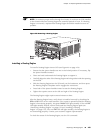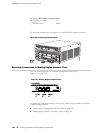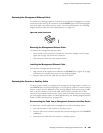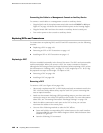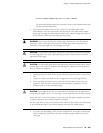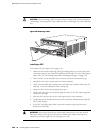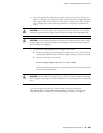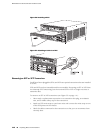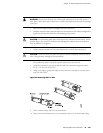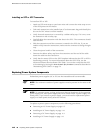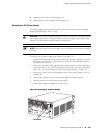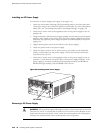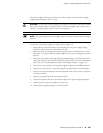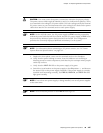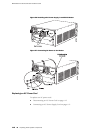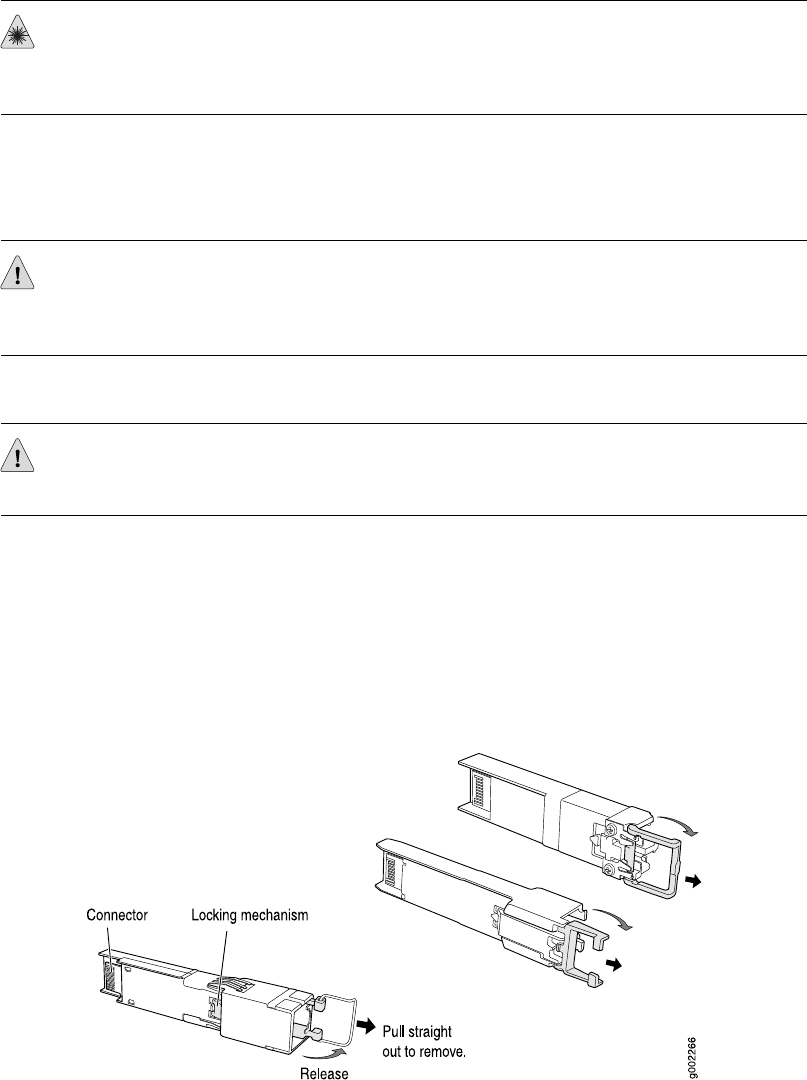
WARNING: Do not look directly into a fiber-optic transceiver or into the end of a
fiber-optic cable. Fiber-optic transceivers contain laser light sources that can damage
your eyes.
4. Remove the cable connector plugged into the transceiver.
5. Carefully drape the disconnected cable over the bobbins in the cable management
system to prevent the cable from developing stress points.
CAUTION: Avoid bending fiber-optic cable beyond its minimum bend radius. An arc
smaller than a few inches in diameter can damage the cable and cause problems
that are difficult to diagnose.
6. Pull the ejector handle out from the transceiver to unlock the transceiver.
CAUTION: Make sure that you open the ejector handle completely until you hear it
click. This prevents damage to the transceiver.
Use needlenose pliers to pull the ejector handle out from the SFP.
7. Grasp the transceiver ejector handle and pull the transceiver approximately
0.5 in. (1.3 cm) out of the DPC.
8. Using your fingers, grasp the body of the transceiver and pull it the rest of the
way out of the DPC.
Figure 52: Removing SFPs or XFPs
9. Place a rubber safety cap over the transceiver.
10. Place the removed transceiver on an antistatic mat or in an electrostatic bag.
Replacing DPCs and Transceivers ■ 111
Chapter 13: Replacing Hardware Components



